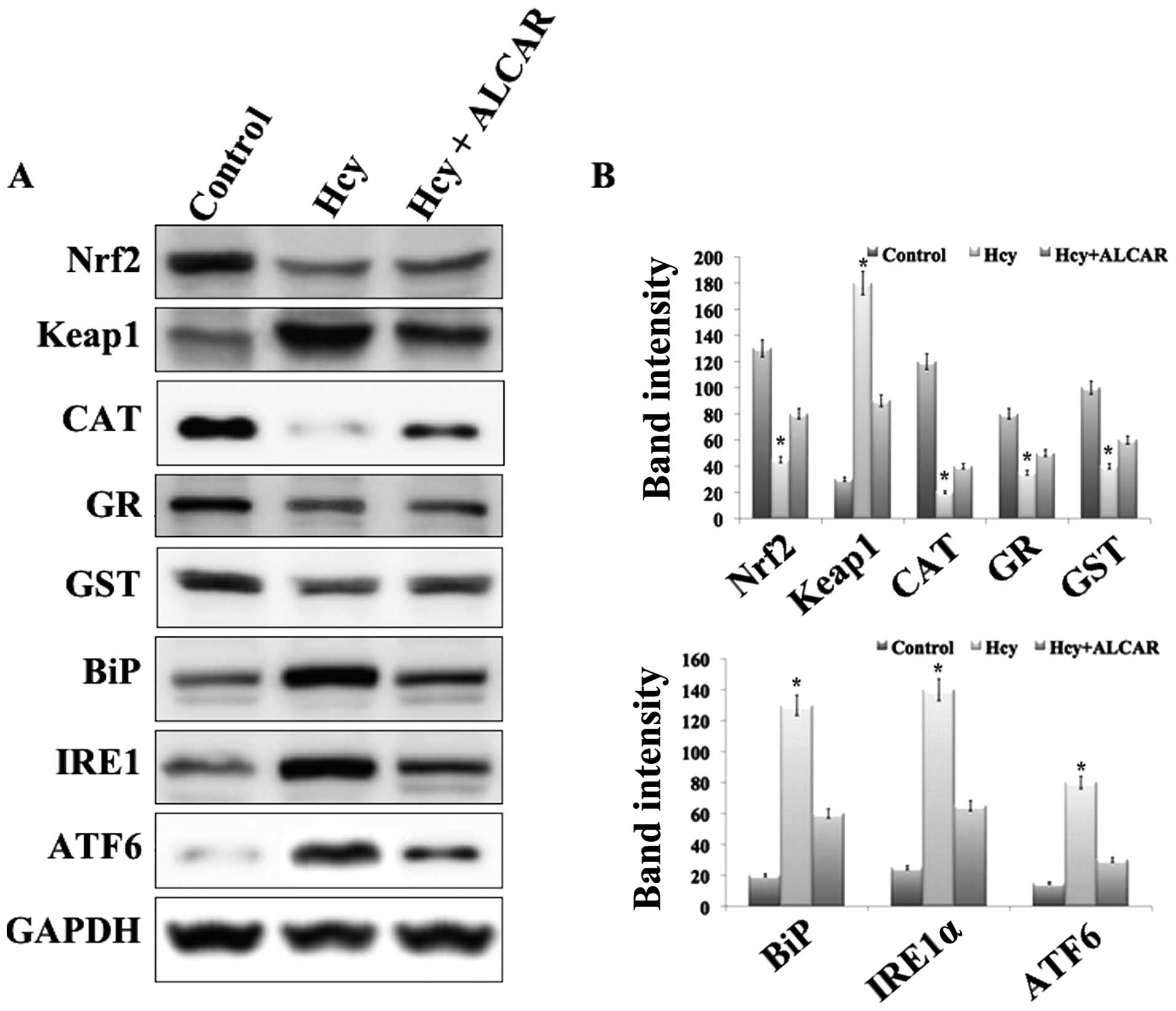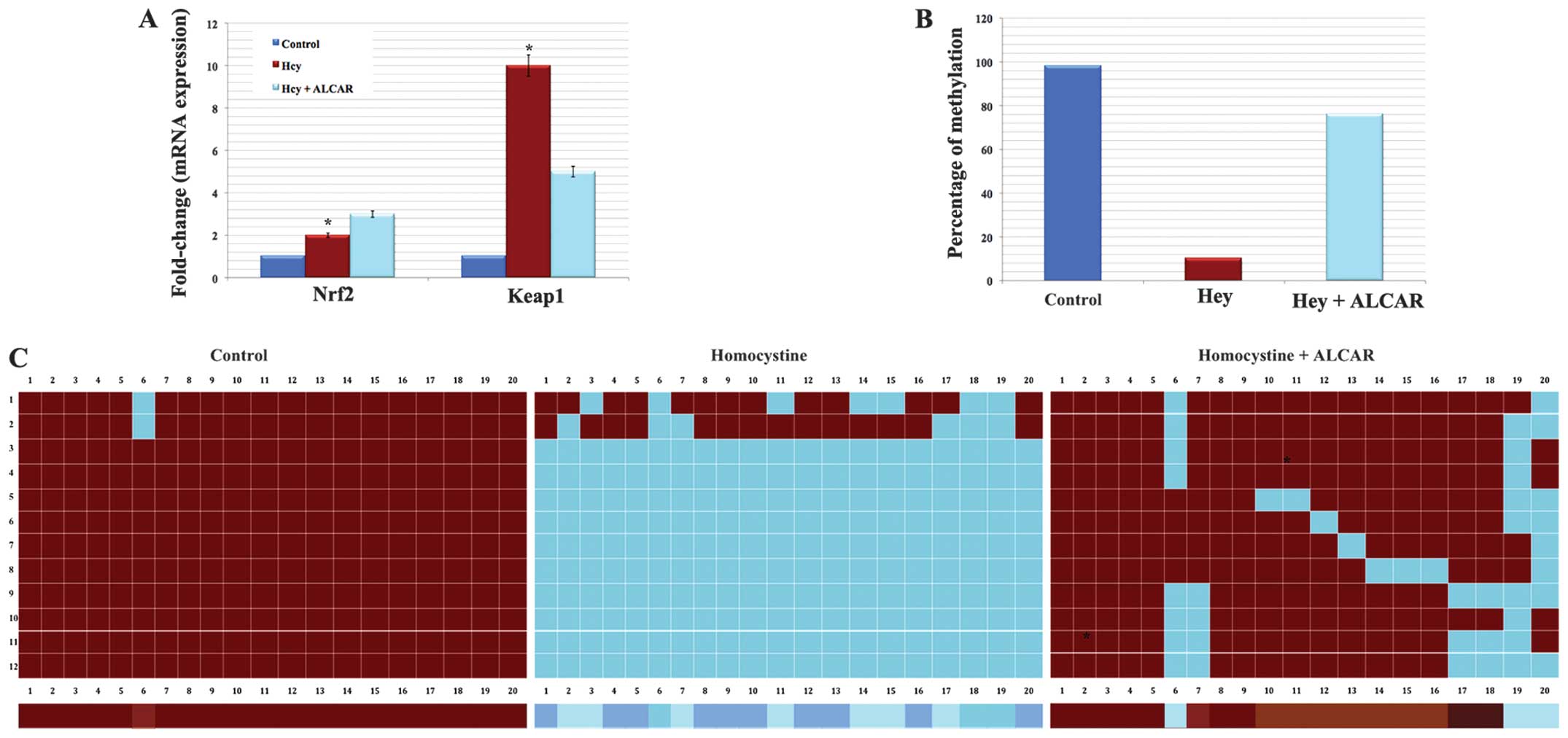|
1
|
Sen SK, Pukazhvanthen P and Abraham R:
Plasma homo-cysteine, folate and vitamin B(12) levels in senile
cataract. Indian J Clin Biochem. 23:255–257. 2008. View Article : Google Scholar : PubMed/NCBI
|
|
2
|
Sulochana KN, Amirthalakshmi S, Vasanthi
SB, et al: Homocystinuria with congenital/developmental cataract.
Indian J Pediatr. 67:725–728. 2000. View Article : Google Scholar : PubMed/NCBI
|
|
3
|
Cumurcu T, Sahin S and Aydin E: Serum
homocysteine, vitamin B 12 and folic acid levels in different types
of glaucoma. BMC Ophthalmol. 6:62006. View Article : Google Scholar : PubMed/NCBI
|
|
4
|
Selhub J: Homocysteine metabolism. Annu
Rev Nutr. 19:217–246. 1999. View Article : Google Scholar : PubMed/NCBI
|
|
5
|
Williams KT and Schalinske KL:
Homocysteine metabolism and its relation to health and disease.
Biofactors. 36:19–24. 2010.PubMed/NCBI
|
|
6
|
Ron D and Walter P: Signal integration in
the endoplasmic reticulum unfolded protein response. Nat Rev Mol
Cell Biol. 8:519–529. 2007. View
Article : Google Scholar : PubMed/NCBI
|
|
7
|
Todd DJ, Lee AH and Glimcher LH: The
endoplasmic reticulum stress response in immunity and autoimmunity.
Nat Rev Immunol. 8:663–674. 2008. View
Article : Google Scholar : PubMed/NCBI
|
|
8
|
Elanchezhian R, Palsamy P, Madson CJ, et
al: Low glucose under hypoxic conditions induces unfolded protein
response and produces reactive oxygen species in lens epithelial
cells. Cell Death Dis. 3:e3012012. View Article : Google Scholar : PubMed/NCBI
|
|
9
|
Ikesugi K, Yamamoto R, Mulhern ML and
Shinohara T: Role of the unfolded protein response (UPR) in
cataract formation. Exp Eye Res. 83:508–516. 2006. View Article : Google Scholar : PubMed/NCBI
|
|
10
|
Elanchezhian R, Palsamy P, Madson CJ,
Lynch DW and Shinohara T: Age-related cataracts: homocysteine
coupled endoplasmic reticulum stress and suppression of
Nrf2-dependent antioxidant protection. Chem Biol Interact.
200:1–10. 2012. View Article : Google Scholar : PubMed/NCBI
|
|
11
|
Huang HC, Nguyen T and Pickett CB:
Phosphorylation of Nrf2 at Ser-40 by protein kinase C regulates
antioxidant response element-mediated transcription. J Biol Chem.
277:42769–42774. 2002. View Article : Google Scholar : PubMed/NCBI
|
|
12
|
Enomoto A, Itoh K, Nagayoshi E, et al:
High sensitivity of Nrf2 knockout mice to acetaminophen
hepatotoxicity associated with decreased expression of
ARE-regulated drug metabolizing enzymes and antioxidant genes.
Toxicol Sci. 59:169–177. 2001. View Article : Google Scholar : PubMed/NCBI
|
|
13
|
Kaspar JW, Niture SK and Jaiswal AK:
Nrf2:INrf2 (Keap1) signaling in oxidative stress. Free Radic Biol
Med. 47:1304–1309. 2009. View Article : Google Scholar : PubMed/NCBI
|
|
14
|
Gao Y, Yan Y and Huang T: Human
age-related cataracts: Epigenetic suppression of the nuclear factor
erythroid 2-related factor 2-mediated antioxidant system. Mol Med
Rep. 11:1442–1447. 2015.
|
|
15
|
Peluso G, Petillo O, Barbarisi A, et al:
Carnitine protects the molecular chaperone activity of lens
alpha-crystallin and decreases the protein post-translational
modifications induced by oxidative stress. FASEB J. 15:1604–1606.
2001.PubMed/NCBI
|
|
16
|
Riccioloni R, Scalibastri M, Kelleher JK,
et al: Role of acetyl-L-carnitine in rat brain lipogenesis:
implications for polyunsaturated fatty acid biosynthesis. J
Neurochem. 71:2510–2517. 1998. View Article : Google Scholar
|
|
17
|
Zhou P, Chen Z, Zhao N, et al:
Acetyl-L-carnitine attenuates homocysteine-induced Alzheimer-like
histopathological and behavioral abnormalities. Rejuvenation Res.
14:669–679. 2011. View Article : Google Scholar : PubMed/NCBI
|
|
18
|
Elanchezhian R, Ramesh E, Sakthivel M, et
al: Acetyl-L-carnitine prevents selenite-induced cataractogenesis
in an experimental animal model. Curr Eye Res. 32:961–971. 2007.
View Article : Google Scholar : PubMed/NCBI
|
|
19
|
Elanchezhian R, Sakthivel M, Geraldine P
and Thomas PA: The effect of acetyl-L-carnitine on lenticular
calpain activity in prevention of selenite-induced
cataractogenesis. Exp Eye Res. 88:938–944. 2009. View Article : Google Scholar : PubMed/NCBI
|
|
20
|
Bradford MM: A rapid and sensitive method
for the quantitation of microgram quantities of protein utilizing
the principle of protein-dye binding. Anal Biochem. 72:248–254.
1976. View Article : Google Scholar : PubMed/NCBI
|
|
21
|
Livak KJ and Schmittgen TD: Analysis of
relative gene expression data using real-time quantitative PCR and
the 2(-Delta Delta C(T)) Method. Methods. 25:402–408. 2001.
View Article : Google Scholar
|
|
22
|
Rohde C, Zhang Y, Reinhardt R and Jeltsch
A: BISMA - fast and accurate bisulfite sequencing data analysis of
individual clones from unique and repetitive sequences. BMC
Bioinformatics. 11:2302010. View Article : Google Scholar :
|
|
23
|
Elanchezhian R, Sakthivel M, Geraldine P
and Thomas PA: Regulatory effect of acetyl-l-carnitine on
expression of lenticular antioxidant and apoptotic genes in
selenite-induced cataract. Chem Biol Interact. 184:346–351. 2010.
View Article : Google Scholar : PubMed/NCBI
|
|
24
|
Brennan LA and Kantorow M: Mitochondrial
function and redox control in the aging eye: role of MsrA and other
repair systems in cataract and macular degenerations. Exp Eye Res.
88:195–203. 2009. View Article : Google Scholar :
|
|
25
|
Lou MF: Redox regulation in the lens. Prog
Retin Eye Res. 22:657–682. 2003. View Article : Google Scholar : PubMed/NCBI
|

















